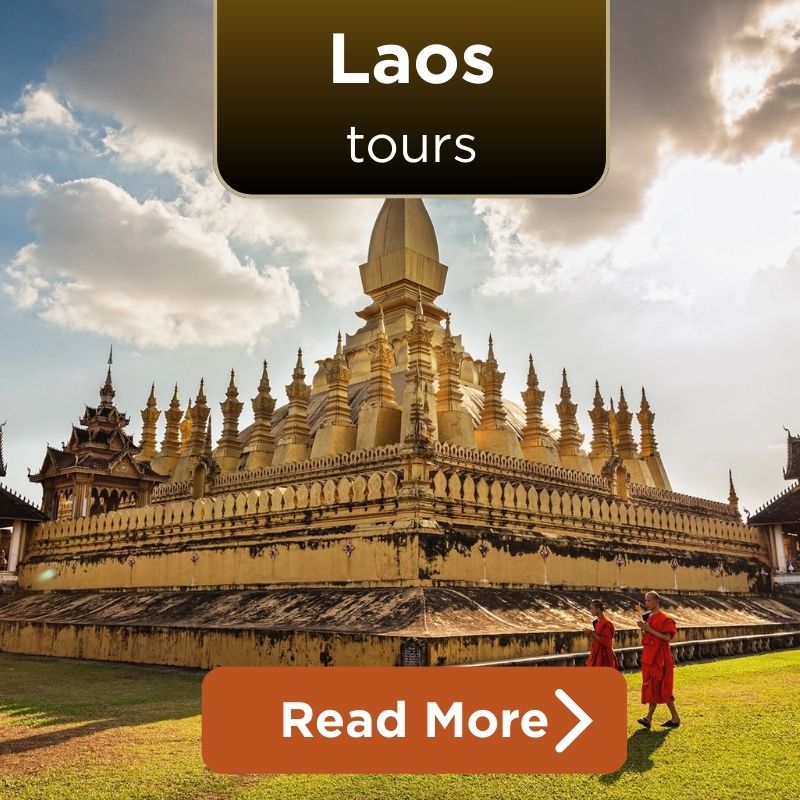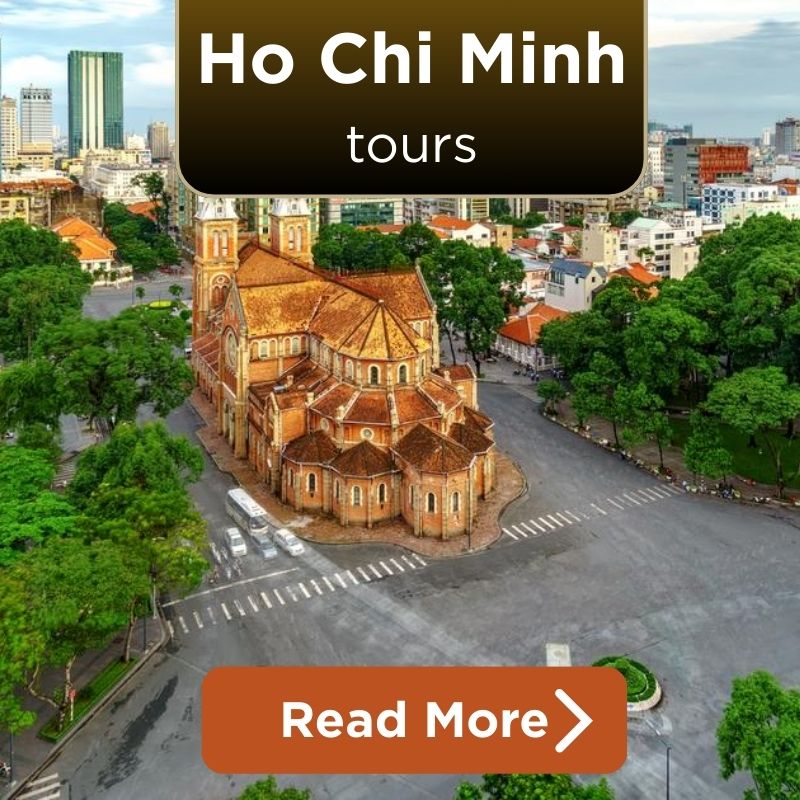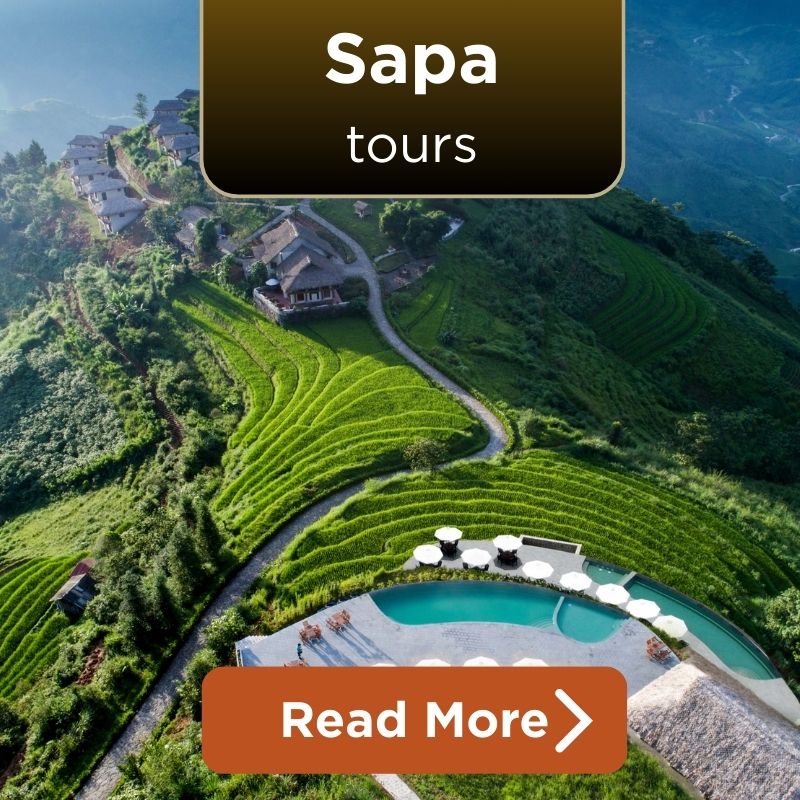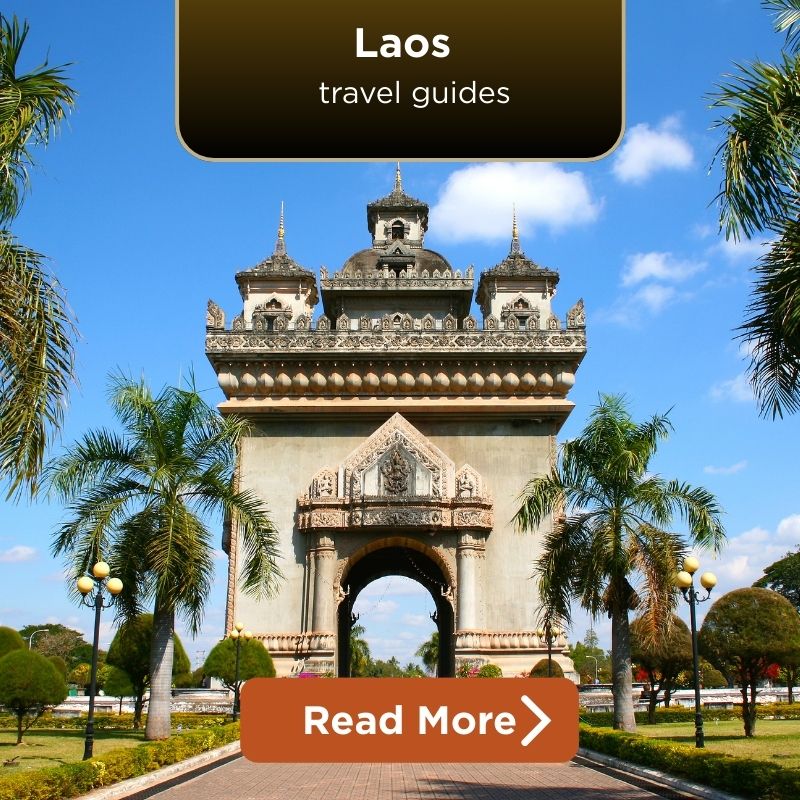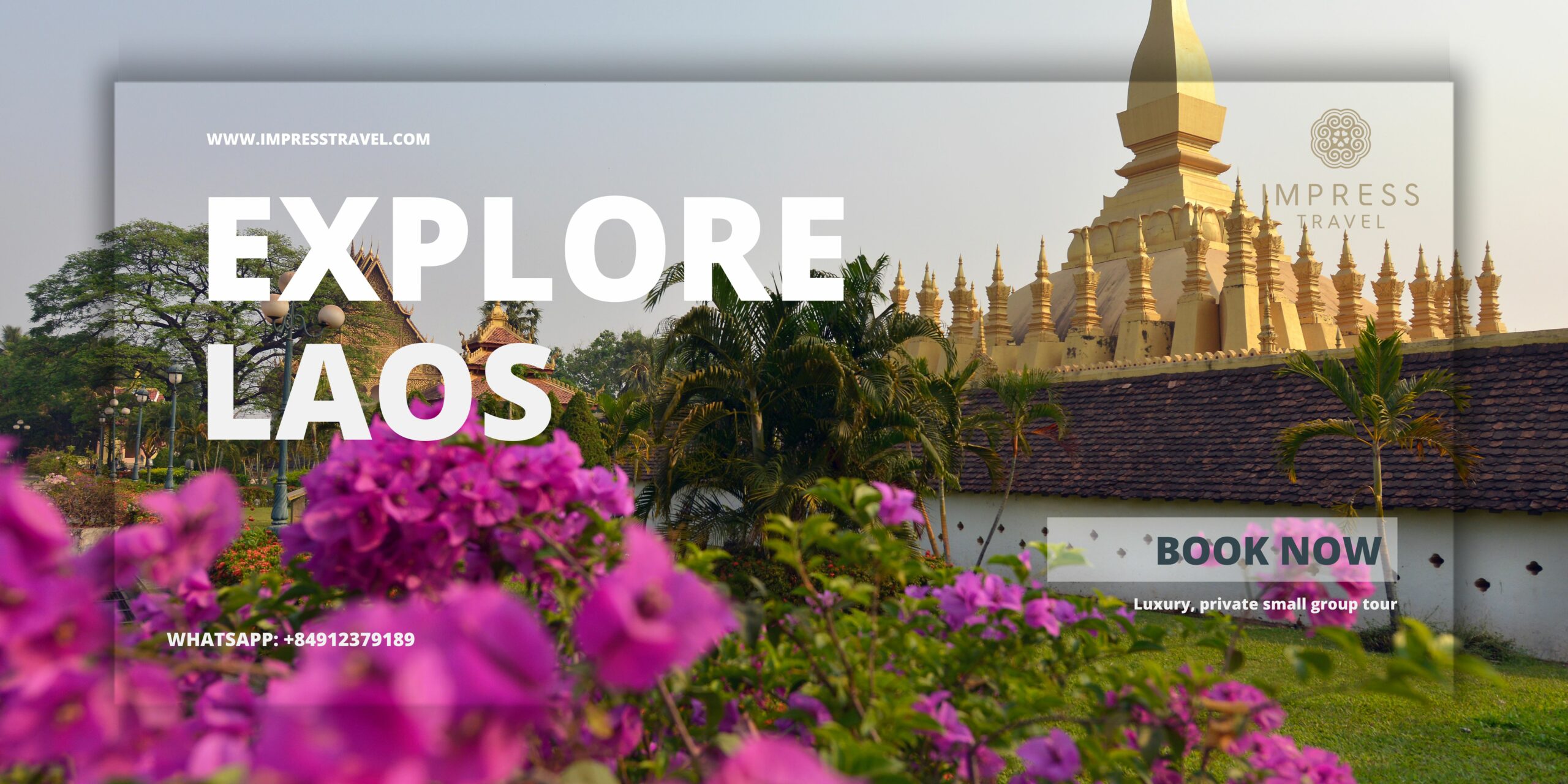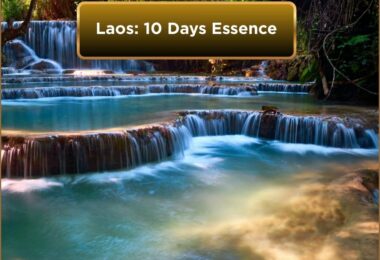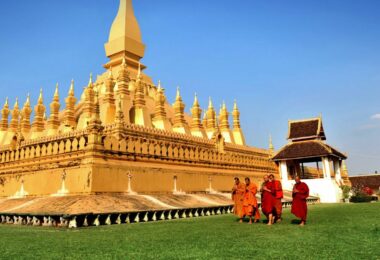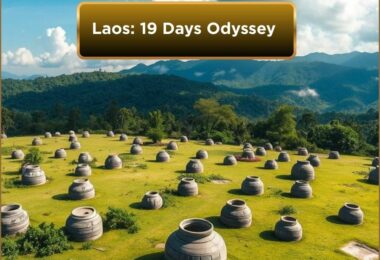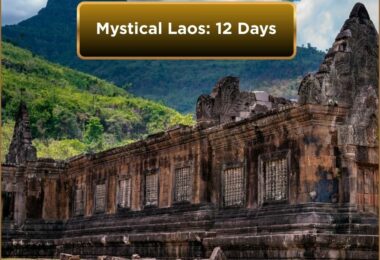What is Laotian Sticky Rice (Khao Niew)?
Sticky rice, or Khao Niew, is glutinous rice — made from a type of rice that contains almost entirely amylopectin with very little amylose (typically less than 2%). This gives it a chewy, stretchy texture that’s completely different from regular rice
It’s also gluten-free, making it suitable for those with gluten sensitivity. Unlike ordinary rice, sticky rice in Laos does not expand when cooked. It is soaked overnight and then steamed using a bamboo basket called a huad, which keeps it from touching the water.
In northern provinces like Sankhuang, sticky rice changes color as it ages. It takes on a tan tint instead of staying white — a sign of quality and traditional cultivation.
It is also rich in nutrients. A single cup provides up to 18% of your daily selenium needs and over 20% of your manganese, both of which support metabolism and antioxidant protection. This rice is more than a side dish. It is eaten in every household, in every province — from the mountain villages of Phongsaly to the river towns of Champasak.
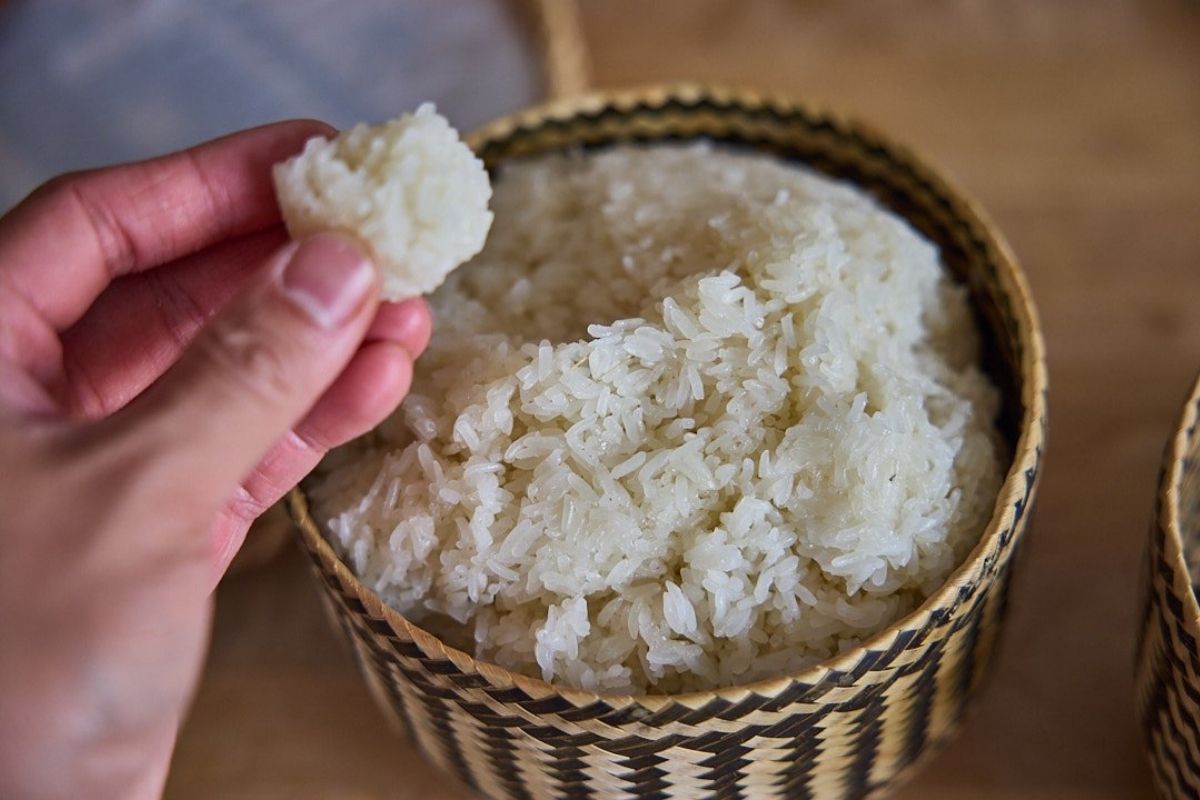
Laotian Sticky Rice (Source: saengskitchen)
A Sensory Food: Fragrance, Texture & Color
Laotian sticky rice is a multi-sensory experience. In fact, many Lao people — especially elders and farmers — have the rare ability to identify the age and origin of rice just by its smell. This skill is passed down through generations and reflects deep agricultural wisdom.
Visitors can try this themselves on Impress Travel’s food and farming tours in Luang Prabang. These tours include village visits where travelers can smell, touch, and steam the rice using traditional techniques.
The cooked rice should be soft, stretchy, and never mushy.
Its color can range from translucent white to earthy tan, and in the highlands, even deep purple or black. Each variety offers a different fragrance and texture — shaped by the soil, climate, and hands that raised it.
Regional Varieties of Sticky Rice in Laos
Sticky rice in Laos comes in multiple varieties, each with a distinct taste, color, and cultural meaning.
- White sticky rice is the most common. It is soft, fragrant, and served in almost every meal across the country.
- Purple sticky rice grows in the highlands. It is rich in anthocyanins — powerful antioxidants — and often used in sweet dishes like coconut sticky rice.
- Black sticky rice is more rare. It has a nutty flavor and is often reserved for special occasions or used in mixed rice dishes.
But the most celebrated is Khao Kai Noi, grown only in Xieng Khouang province.This variety is known for its unique fragrance and soft bite. It can only thrive in the cool highland climate, and its harvest is celebrated every year with a local festival. The Khao Kai Noi Festival, held from November 25th to 30th, is a one-of-a-kind experience.
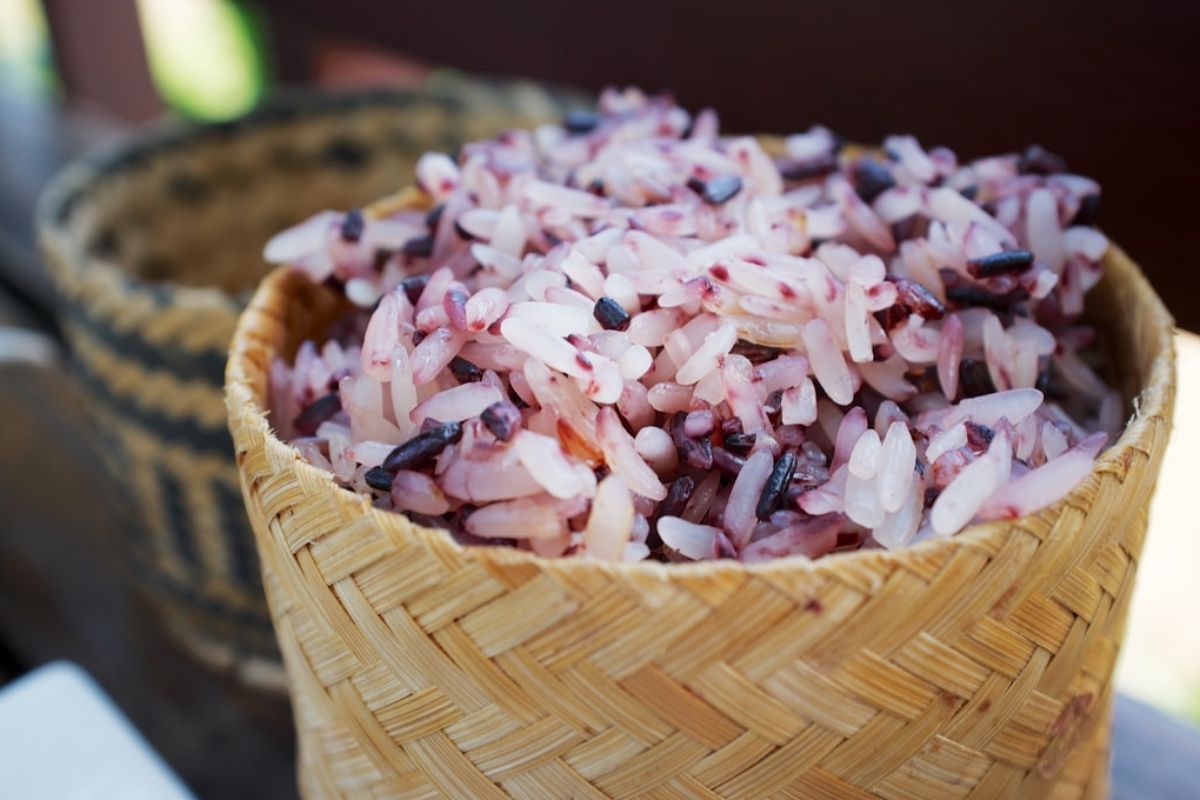
Purple Sticky Rice (Source: travellaosonline)
The Traditional Cooking Method: Why Bamboo Matters
Instead of boiling, sticky rice is steamed in a conical bamboo basket (huad) placed above boiling water. The rice never touches the water — it’s cooked purely by steam, which gives it that perfect chewy texture without becoming mushy. This method has been passed down for generations and is still practiced in every household across the country.
Once cooked, sticky rice is stored in a round bamboo container called aep khao. This simple but brilliant invention retains the rice’s warmth and fragrance for hours, allowing families to enjoy soft, flavorful sticky rice throughout the day — no electricity needed.
Why is Sticky Rice so Popular in Laos?
Cultural Role and Symbolism
Lao people proudly call themselves “Luk Khao Niew,” or “children of sticky rice” — a powerful reflection of how profoundly this grain shapes their identity. As the national food of Laos, sticky rice is not only eaten daily but also holds deep spiritual meaning. In the sacred Baci ceremony, uncooked sticky rice is thrown into the air to bless life’s important moments, from weddings to healing rituals, making it both a staple and a symbol of protection and prosperity in Lao culture.
Agricultural Resilience
Sticky rice is not only sacred — it’s also practical.
It has a short growing cycle (about 90–110 days) and thrives in poor, mountainous soils with limited rainfall. This resilience makes it the perfect crop for the rural farmers of Laos, especially in the northern highlands.
How to Eat Sticky Rice Like a Local
Cultural Etiquette When Eating Khao Niew
Eating sticky rice in Laos is all about hands and respect.
Locals use their left hand to take rice from the basket and right hand to eat. You roll the rice into a small ball or oval, press it gently, then dip it into a savory sauce like jeow, or scoop up dishes like laap, som tam, mok pa, or ping gai.
A gentle reminder: when sharing food, avoid reaching across others — it’s a matter of etiquette. And once you’re full, you can say “Im lai”, meaning “I’m full,” a common and warm way to end a meal in Lao households.
Health Precautions and Considerations
Sticky rice is naturally gluten-free, making it suitable for travelers with gluten intolerance.
However, because it’s highly glutinous and dense, those with sensitive digestion, such as young children, elders, or people with stomach issues, should eat it in small portions.
Always eat sticky rice warm and freshly steamed. If stored improperly, it can become hard or even unsafe. At Impress Travel, our hosts always ensure food hygiene and proper preparation, so you can taste authentic sticky rice worry-free.
Sticky Rice in Lao Cuisine: What Dishes to Try
Must-Try Sticky Rice Dishes
Sticky rice is the perfect match for nearly every dish in Laos:
- Laap (Laos food larb salad)
- Laos green papaya salad
- Mok Pa (steamed fish in banana leaf)
- Ping Gai (grilled chicken)
- Khao Jee (grilled sticky rice on a skewer)
- Khao Tom Mat (banana-filled sweet sticky rice)
- Khao Lam (sticky rice baked in bamboo)
Don’t miss purple sticky rice — rich in antioxidants and often served with coconut cream in desserts.
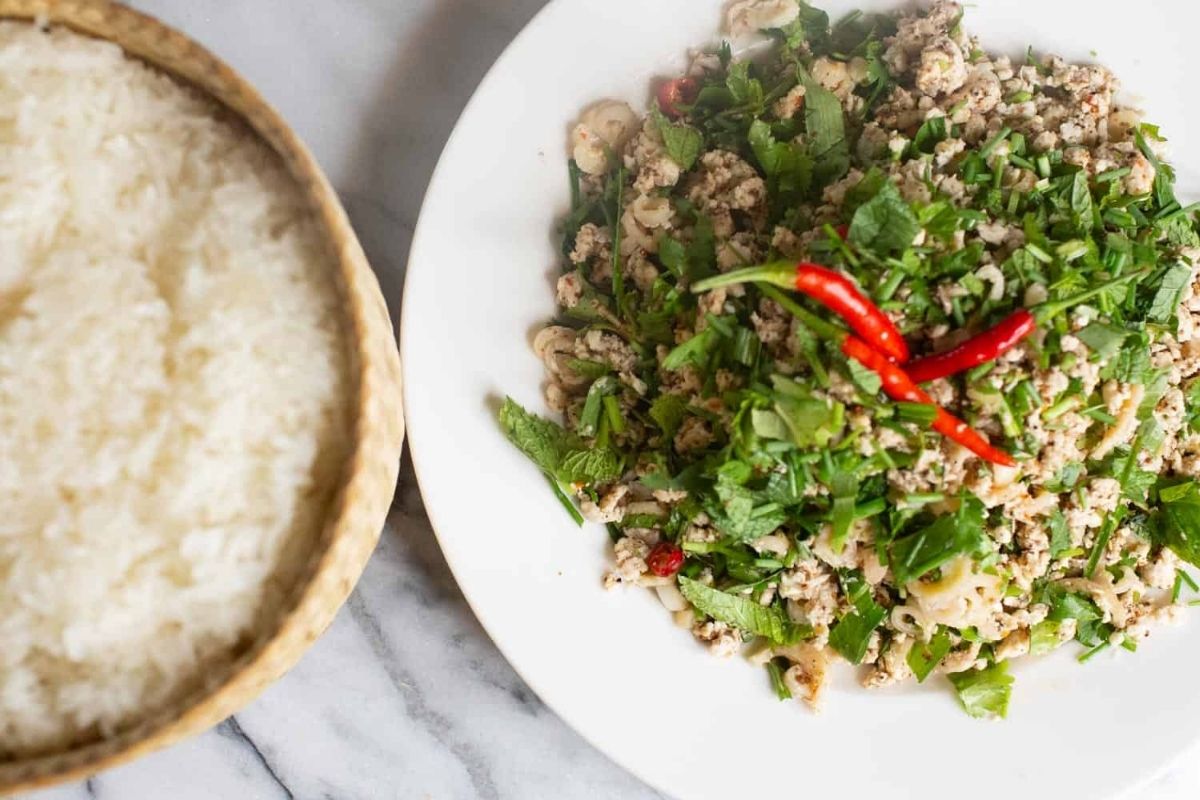
Laotian Sticky Rice Wiith Laap (Source: cookingwithlane)
Where to Find the Best Sticky Rice in Laos
- Try it hot and fresh at the Luang Prabang Night Market or Vientiane Central Market.
- Traditional Lao restaurants serve it in beautiful aep khao baskets, just like in family homes.
Buying & Storing Sticky Rice: Travel Tips
Where to Buy Sticky Rice in Laos & Abroad
For travelers looking to bring the taste of Laos home, sticky rice is easy to find — if you know where to look. In Laos, the best places are the traditional markets of Luang Prabang and Vientiane, where local farmers sell freshly harvested sticky rice by the kilo. You’ll also find it in supermarkets and specialty stores in major towns.
Expect to pay around $3 per pound for regular white sticky rice. Purple and black varieties, or rare types like Khao Kai Noi, may cost a bit more — but they’re worth every kip for their unique aroma and nutrition.
How to Store Sticky Rice at Home or When Traveling
To preserve the magic of Khao Niew, storage matters.
- Dry sticky rice: Store in an airtight container, vacuum-sealed bag, or glass jar. Keep it cool and away from light. It stays fresh for up to a month in the fridge or two months in the freezer.
- Cooked sticky rice: Let it cool, then pack it into a sealed container. Refrigerate for up to 5 days. To reheat, use a bamboo steamer or microwave with a damp cloth to restore softness.
- Travel tip: Use insulated bags for short trips or bring vacuum-sealed dry rice to share with friends and family — a perfect edible souvenir.
Join the Full-Day Lao Sticky Rice Tour in Luang Prabang with Impress Travel
Looking to go deeper than just a taste? Come live the sticky rice story on our Full-Day Lao Sticky Rice Cultural Tour:
|
Time
|
Activity
|
Location
|
Description
|
|
08:00 – 11:00
|
Sticky Rice Workshop at Living Land Farm
|
Ban Phanom Village, Luang Prabang
|
Start your morning by planting rice, plowing with a buffalo, harvesting, pounding, and steaming sticky rice the traditional way. You’ll also learn how to weave bamboo baskets and forge metal tools like a local.
|
|
11:30 – 13:00
|
Lunch at Khaiphaen Restaurant
|
17 Sakkaline Road, Ban Wat Nong
|
Savor traditional Lao dishes while supporting vocational training for underprivileged youth. A warm-hearted dining experience in a charming setting.
|
|
13:30 – 15:30
|
Visit to Ock Pop Tok Living Crafts Centre
|
Unit 30, Ban Vat Nong
|
Discover the art of Lao weaving and textile-making. Join mini workshops and shop meaningful souvenirs handmade by local artisans.
|
|
18:30 – 20:00
|
Dinner at Manda de Laos
|
Khem Khong Street, Luang Prabang
|
Wind down beside a lotus pond with a fine Lao dinner and signature cocktails. A stunning finale to your day of immersive culture and cuisine.
|
This itinerary is flexible and can be tailored to your pace — whether you want more time to relax or explore more. It’s one of our most beloved Impress Travel Laos experiences, balancing food, culture, and unforgettable moments.
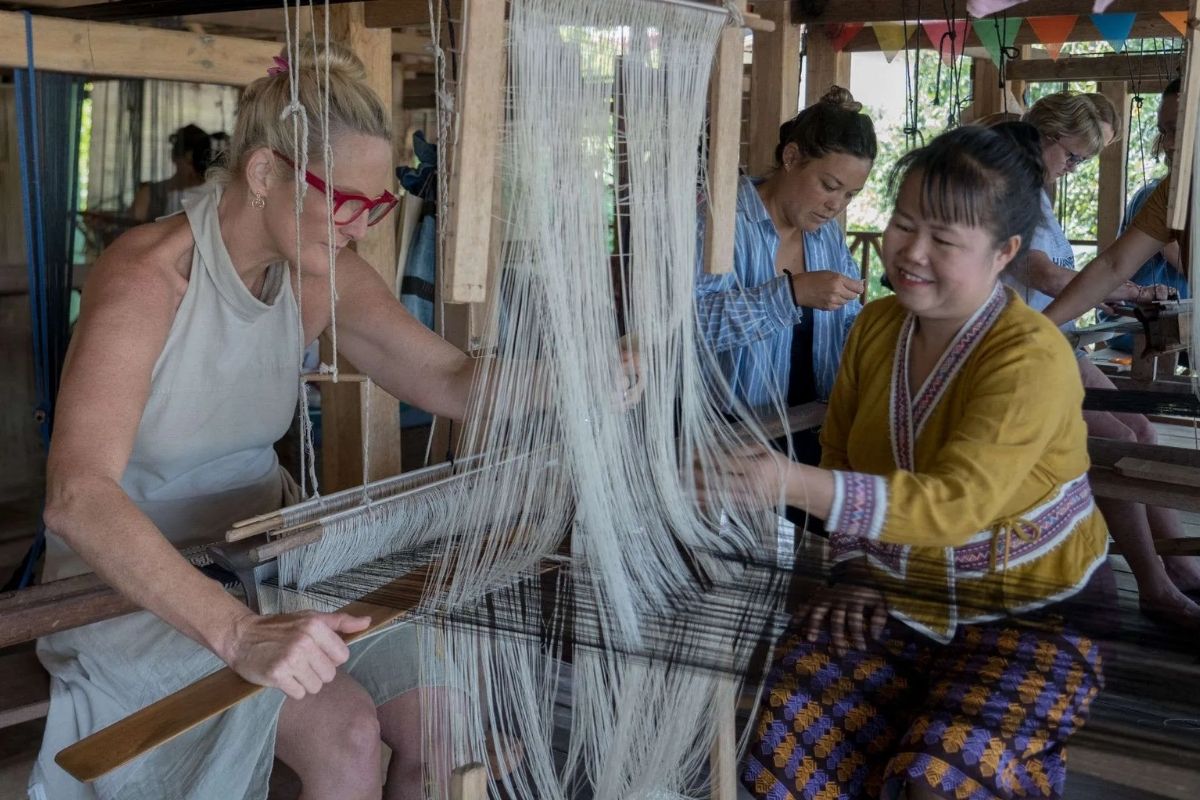
Ock Pop Tok Living Crafts Centre (Source: ockpoptok)
Conclusion
Laotian sticky rice is far more than just a side dish. It’s a taste of belonging, a ritual of remembrance, and a symbol of Lao generosity. It holds stories, feeds generations, and connects souls — one sticky grain at a time. With Impress Travel, you don’t just visit Laos — you live it. Book your journey today and let the fragrance of Khao Niew lead you straight to the heart of Lao hospitality.
Ready to join us? Your next cultural adventure — and your next unforgettable bite — is just one sticky rice away.
FAQs
Why is sticky rice so popular in Laos?
Because it’s far more than food — it’s identity. Sticky rice symbolizes Lao heritage, family unity, spiritual purity, and seasonal celebration. From humble breakfasts to sacred Baci ceremonies, it’s always present.
What is the purpose of sticky rice in Lao society?
Sticky rice serves as a spiritual and social bridge — connecting the living to their ancestors through rituals like the Baci ceremony, and linking communities through shared meals, festivals, and farming practices.
What are the characteristics of sticky rice?
Laotian sticky rice is defined by its chewy, sticky texture — thanks to amylopectin-rich starch molecules. It comes in many regional forms (white, purple, black), is energy-rich, and can be both savory and sweet.
Is sticky rice healthier than regular rice?
In many ways, yes. It’s gluten-free, slow-digesting, and rich in minerals. However, its stickiness makes it harder to digest for some. Seniors, small children, and those with sensitive stomachs should enjoy it in moderation.







